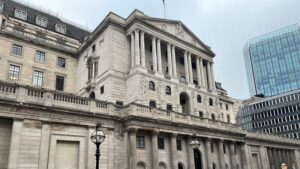How things can change in five years. And, as we celebrate a milestone half a decade of our magazine with our October 2011 edition out next week, please let me indulge in a moment of nostalgia to reflect on how we saw the world then, versus now.
Of course, fast forward two years and that “slowdown” we predicted in 2006 turned into something a whole lot more troublesome. Before we get to this, ahem, ‘crunch’ moment, I guess it is only fair I give passing mention to our founding editor Gary Corcoran’s memorable article on the global economy from March 2008.
“Conditions are nowhere near as recessionary as those of the late ‘80s and early ‘90s or even in 2001,” he said. The headline of this article? ‘Recession? What Recession?’ Sorry, Gary!
Ok, so we do not get it right all the time, but then show me someone that does. The worst crime, surely, is repeating your mistakes.
Taking credit
Another anniversary has also just passed with little fanfare. I make it around three years since we were battening down the hatches in the wake of the fall of Lehman Brothers, Merrill Lynch et al, which changed the financial services landscape for good. At the time, Fed chief Alan Greenspan called it a “once in a century type of event”, but while the world markets did recover and banking regulation has since tightened considerably (though not enough for some), have things really changed that much?
With European economies, and their banks, perilously close to oblivion once again, financials is once more top of the list of sectors to avoid, for both equity and bond investors. Elsewhere, the arrest of UBS trader Kweku Adoboli in September for allegedly losing £1.3bn in unauthorised trading brings to mind more recent entrants to the investment rouges gallery, Jerome Kerviel and Bernard Madoff.
No absolutes
Absolute return was covered back in our first issue – we were one of the first adviser-focused publications to cover these funds in depth – and this is arguably the strategy that has made the most steps forward in appearing in client portfolios over the past five years.
Today Ucits absolute return funds are consistently among the bestseller lists, though whether or not they justify the hype remains to be seen once their performance is assessed over a whole market cycle.
From a personal viewpoint, these past five years have made me more cynical – about products and forecasts – and absolute return is the perfect case in point. It will be interesting to see how these funds begin to explore new areas and differentiate themselves from their peers in the next few years.
Up to date
Today’s announcement from Fidelity that it is to launch low-cost multi-asset funds, which invest in index funds, brings up another example of the way in which the industry is evolving. Cost pressures, bought on by the rise of passives/ETFs and the FSA’s RDR, mean fund groups have to work extra hard to justify the value of their active products, and this is only going to accelerate.
The post-RDR environment also promises to bring further challenges and opportunities for wealth managers, and for us serving the industry. Our new website, launched this week, is another way we are upping our game to keep in line with your changing needs. Thanks as always for your support, and here’s to another five years!







